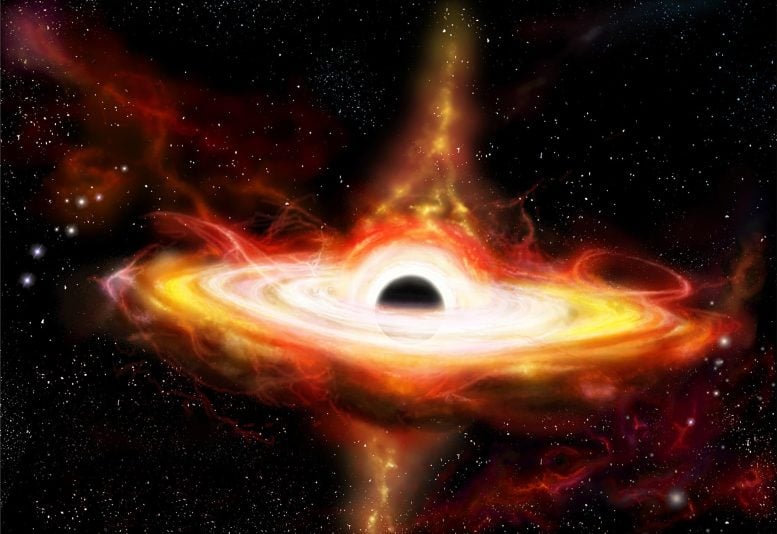
The James Webb Space Telescope has captured images of two early-universe quasars, shedding light on the relationship between black holes and their host galaxies. This breakthrough suggests that the mass ratio observed in more recent galaxies was already present less than a billion years after the Big Bang.
JWST’s recent observations of two quasars from the universe’s infancy reveal crucial insights into the early relationship between black holes and their galaxies, echoing mass ratios seen in the more recent universe.
New images from the James Webb Space Telescope (JWST) have revealed, for the first time, starlight from two massive galaxies hosting actively growing black holes – quasars – seen less than a billion years after the Big Bang. The black holes have masses close to a billion times that of the Sun, and the host galaxy masses are almost one hundred times larger, a ratio similar to what is found in the more recent universe. A powerful combination of the wide-field survey of the Subaru Telescope and the JWST has paved a new path to study the distant universe, reports a recent study in Nature.
Observations of giant black holes have attracted the attention of astronomers in recent years. The Event Horizon Telescope (EHT) has started to image the “shadow” of black holes at the galaxy centers. The 2020 Novel Prize in Physics was awarded to stellar motion observations at the heart of the Milky Way. While the existence of such giant black holes has become solid, no one knows their origin.
Astronomers have reported that there exist billion-solar-mass black holes within the first billion years of the universe – How could these black holes grow to be so large when the universe was so young? Even more puzzling, observations in the local universe show a clear relation between the mass of supermassive black holes and the much larger galaxies in which they reside. The galaxies and the black holes have completely different sizes, so which came first: the black holes or the galaxies? This is a “chicken-or-egg” problem on a cosmic scale.

JWST NIRCam 3.6 μm image of HSC J2236+0032. The zoom-out image, the quasar image, and the host galaxy image after subtracting the quasar light (from left to right). The image scale in light years is indicated in each panel. Credit: Ding, Onoue, Silverman et al.
An international team of researchers led by Masafusa Onoue, a Kavli Astrophysics Fellow at the Kavli Institute for Astronomy and Astrophysics (KIAA) in Peking University, Xuheng Ding, a research fellow at the Kavli Institute for the Physics and Mathematics of the Universe (Kavli IPMU) , and John Silverman, a professor at Kavli IPMU have started to answer this question with the James Webb Space Telescope (JWST), a 6.5-meter space telescope developed by an international collaboration among NASA, the European Space Agency (ESA), and the Canadian Space Agency (CSA), and launched in December 2021.
Quasars are luminous, while their host galaxies are faint, which has made it challenging for researchers to detect the dim light of the galaxy in the glare of the quasar, especially at great distances. “Finding the host galaxies of quasars at redshift 6 is like trying to spot fireflies in a breathtaking firework show while wearing foggy glasses. The host galaxies are incredibly faint, and image resolution has been very limited, even with the Hubble Space Telescope, making it a real challenge to uncover their hidden beauty,” says Xuheng Ding.
The team observed two quasars with the JWST, HSC J2236+0032, and HSC J2255+0251, at redshifts 6.40 and 6.34 when the Universe was approximately 860 million years old. These two quasars were originally discovered by a wide-field survey of the 8.2m-Subaru Telescope, with which the research team has identified more than 160 quasars up to date. The relatively low luminosities of these quasars made them prime targets for measurement of the host galaxy properties, and the successful detection of the hosts represents the earliest epoch to date at which starlight has been detected in a quasar.
The images of the two quasars were taken at infrared wavelengths of 3.56 and 1.50 micron with JWST’s NIRCam instrument, and the host galaxies became apparent after carefully modeling and subtracting glare from the accreting black holes. The stellar signature of the host galaxy was also seen in a spectrum taken by JWST’s NIRSpec for J2236+0032, further supporting the detection of the host galaxy. “I have been deeply involved in the Subaru survey of high-redshift quasars since my PhD years at National Astronomical Observatory of Japan. I am extremely proud of the successful starlight detection from the HSC quasars that we found with Subaru,” says Masafusa Onoue.

Kavli IPMU Project Researcher Xuheng Ding, Professor John Silverman, and Kavli Institute for Astronomy and Astrophysics (PKU-KIAA) Kavli Astrophysics Fellow Masafusa Onoue (from left). Credit: Kavli IPMU, Kavli IPMU, Masafusa Onoue
From the observations, the team found that the ratio of the black hole mass to host galaxy mass is similar to those seen in the more recent Universe. The result suggests that the relationship between black holes and their hosts was already in place within the first billion years after the Big Bang. The team will continue this study with a larger sample of distant quasars, aiming at further constraining the coevolutionary growth history of black holes and their parent galaxies over cosmic time. These observations will constrain models for the coevolution of black holes and their host galaxies.
Read more about this discovery at Researchers Detect the Host Galaxies of Quasars in the Early Universe.
Reference: “Detection of stellar light from quasar host galaxies at redshifts above 6” by Xuheng Ding, Masafusa Onoue, John D. Silverman, Yoshiki Matsuoka, Takuma Izumi, Michael A. Strauss, Knud Jahnke, Camryn L. Phillips, Junyao Li, Marta Volonteri, Zoltan Haiman, Irham Taufik Andika, Kentaro Aoki, Shunsuke Baba, Rebekka Bieri, Sarah E. I. Bosman, Connor Bottrell, Anna-Christina Eilers, Seiji Fujimoto, Melanie Habouzit, Masatoshi Imanishi, Kohei Inayoshi, Kazushi Iwasawa, Nobunari Kashikawa, Toshihiro Kawaguchi, Kotaro Kohno, Chien-Hsiu Lee, Alessandro Lupi, Jianwei Lyu, Tohru Nagao, Roderik Overzier, Jan-Torge Schindler, Malte Schramm, Kazuhiro Shimasaku, Yoshiki Toba, Benny Trakhtenbrot, Maxime Trebitsch, Tommaso Treu, Hideki Umehata, Bram P. Venemans, Marianne Vestergaard, Fabian Walter, Feige Wang and Jinyi Yang, 28 June 2023, Nature.
DOI: 10.1038/s41586-023-06345-5

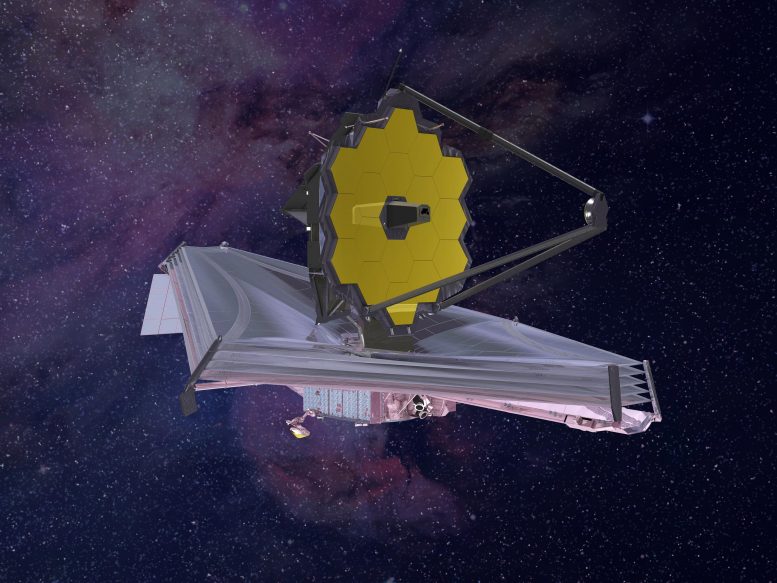
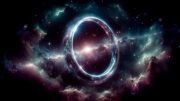
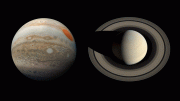

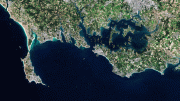
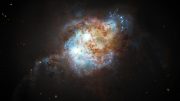
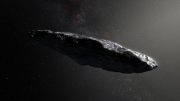
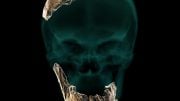
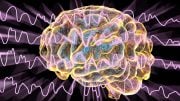
The ultimate origin as explained in my coming second and third cosmology books must have involved metaphysics. In other words matter and mind. Otherwise there would universes all over everywhere.And physics would have been capable of creating an Atom for Nothingness.
Thank you very good
Thank you very good